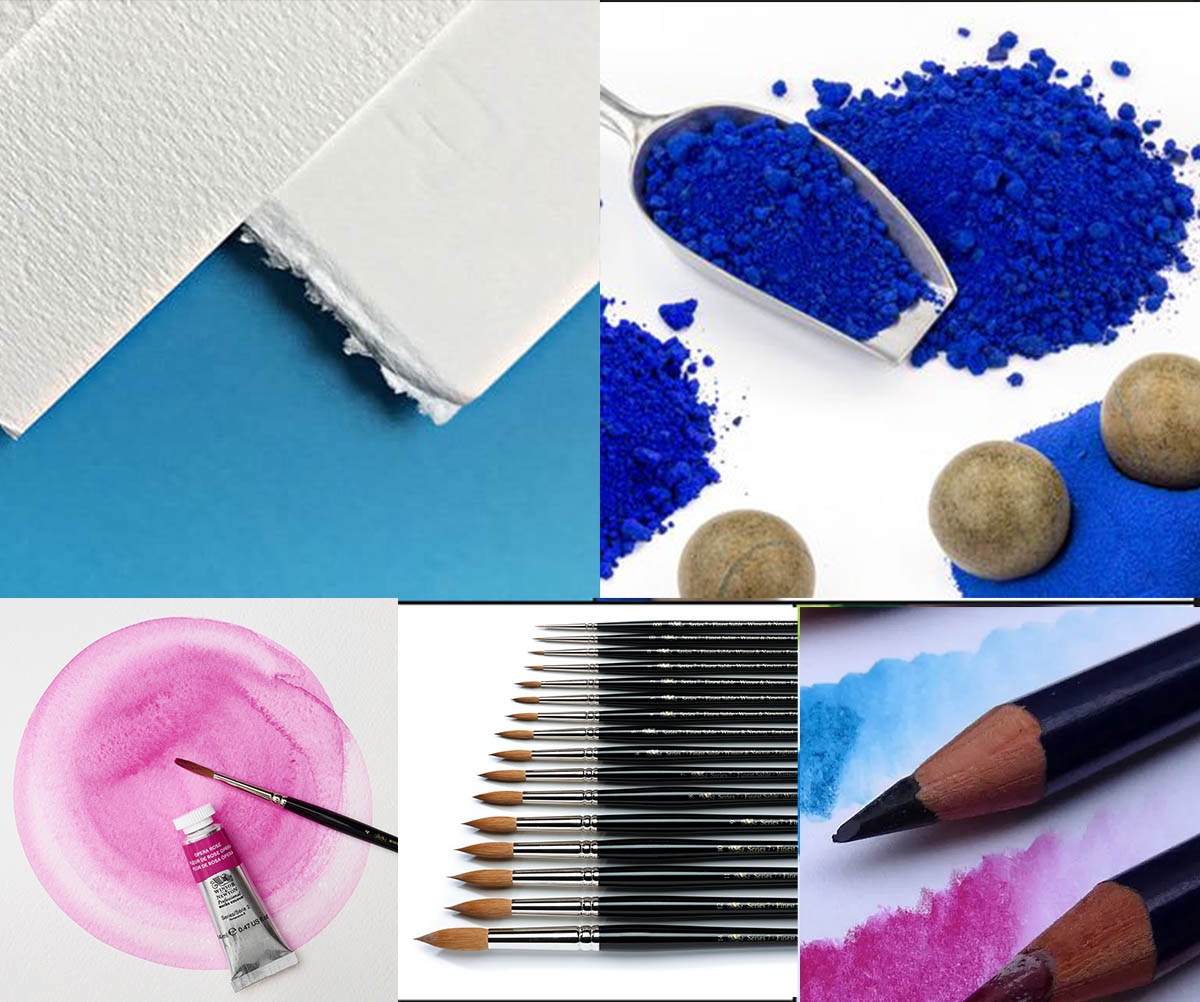Watercolor is one of the most delicate and demanding forms of painting, as the choice of materials plays a crucial role in the quality of the work.
Below is an analysis of the best papers, brushes, and paints for watercolor.
Paper: Paper is perhaps the most important tool in watercolor painting. Cotton-based papers are the best, as they absorb water and pigments evenly. Arches Watercolor Paper and Fabriano Artistico are among the most popular. Papers come in three main textures: cold-pressed for a slightly rough surface, hot-pressed for a smoother finish, and rough for pronounced textures.
Brushes: Natural hair brushes are the best for watercolor because they hold large amounts of water and paint. Squirrel hair brushes are ideal for large areas and wet techniques, while sable hair brushes offer greater precision. A classic example is the Winsor & Newton Series 7 brush, which offers excellent balance and versatility.
Paints: Watercolors are available in tubes and in dry form (pans). Paints made from pure pigments are considered the best, such as Daniel Smith Extra Fine Watercolors and Winsor & Newton Professional Watercolors. Transparent and vibrant colors are preferable, as they allow for the creation of gradients and layers without muddying the work.
Water-soluble inks: Water-soluble inks provide intensity and brightness.
Watercolor pencils: These are ideal for sketches that can be transformed into watercolor paintings with the addition of water. Derwent Watercolor Pencils are particularly popular, offering soft colors and ease of use.
Powders: Pigment powders add intensity and abstract effects to artworks. Brusho Crystal Colour is a favorite product, allowing for blending and the creation of unique textures and patterns.
Natural water-soluble pigments: Natural pigments, such as plant-based dyes and metallic pigments, are environmentally friendly. Natural products like Kremer Pigments offer earthy tones and are a choice for artists seeking organic colors.
Alternative media (tea, coffee): Tea and coffee can be used to create warm tones. These natural materials produce unique monochromatic compositions and add depth to artworks.
The right choice of paper, brushes, and paints can enhance the artist’s technique and contribute to the success of the work.






